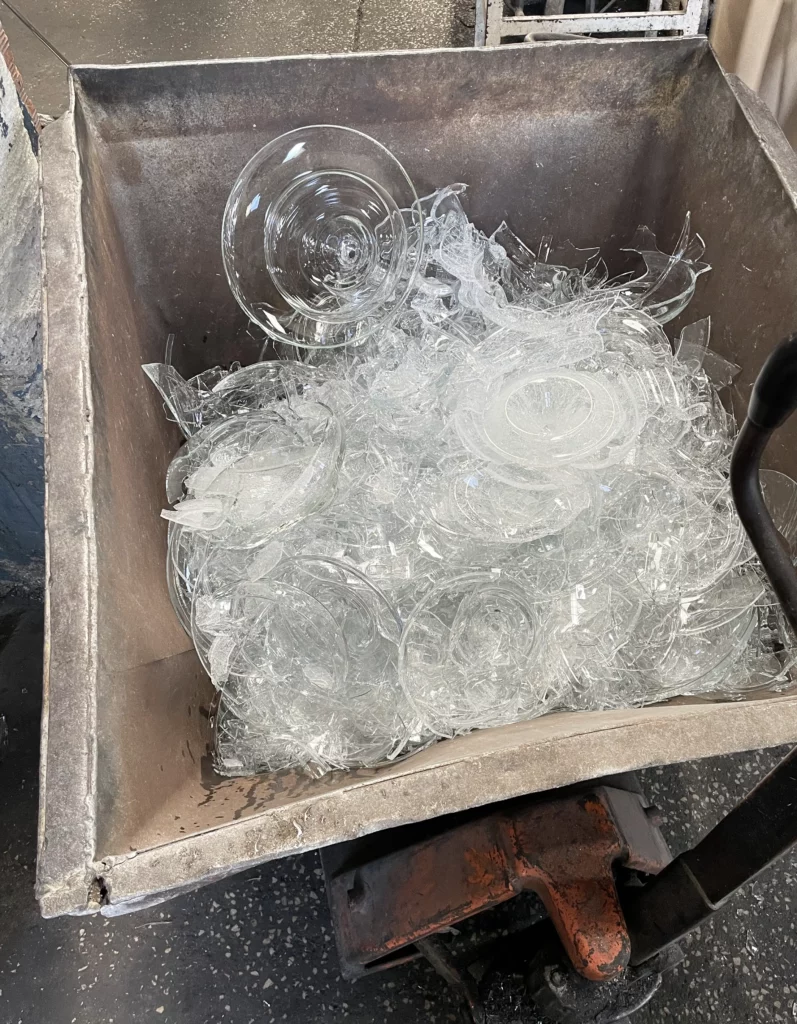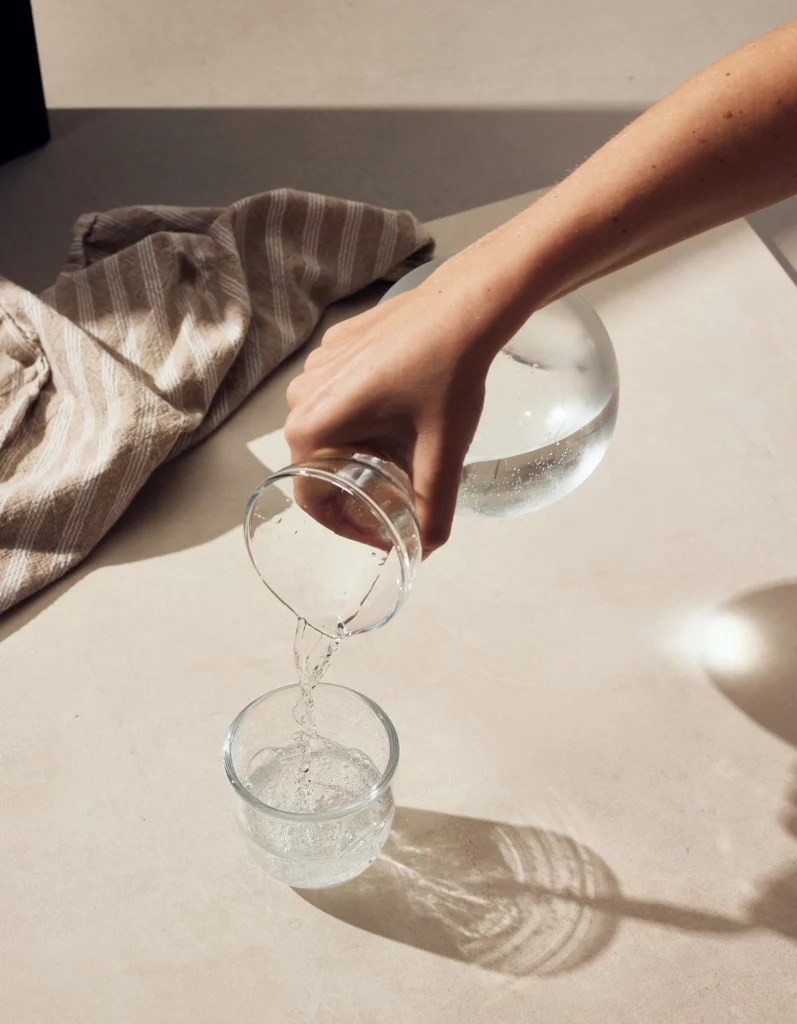Free Deliveries to all European Countries
|
5 years warranty
|
FSC®-certified
Free Deliveries to all European Countries
5 years warranty
FSC®-certified
Words by Form & RefineImages by Form & Refine and grim studie
Glass has always sparked fascination due to its complex nature. Made from sand – a natural material so basic and ubiquitous it almost seems hard to believe that the tiny, granular particles can be transformed into this transparent, crisp and fragile substance – glass enchants makers, users and beholders alike. Rarely has a material held so many intrinsic possibilities – for artistic as well as functional purposes.
The properties of glass
Glass has a rich materiality with states ranging from liquid to solid. It is malleable and pliable when hot but hard once it has been cast or blown. In its solid state, the material is unforgiving, as it can no longer be manipulated into new shapes. No other material contains a similar collection of opposite qualities and symbols. Glass can be matt or transparent, rough or smooth, sharp or soft, fragile or sturdy. Glass can reflect light or allow it to pass through. Glass can convey warmth, in friendly partnership with the sun, or appear cool when the light is gone. Glass can reflect light and symbolize magical worlds, as if it provided a direct link to a parallel world far from here.
Portugal’s historical glass tradition
At Form & Refine, we share this fascination with glass and have established a collaboration with Danish designer Linea Ek Blæhr. Her glass series is named Pinho (‘pine’ in Portuguese) and consists of a drinking glass and carafe developed in partnership with a small family-owned company in Martingança-Gare, where the small factory has maintained a production of glass for the past 33 years. Portugal has a strong tradition of glass production, which gained pace in particular during the mid-18th century in the area round Leiria, which is known for its rich mineral deposits, long, sandy beaches and large pine forests. This is where our manufacturer is located, and our glass series is named after the local pine forests.


Process and method
Pinho has a geometric design expression and is mouth-blown into an aluminium mould. The glass is heated to 1,200 degrees Celsius before it is blown into the mould by an artisan glassblower. Next, the mould is opened, and the glass is removed while it is still hot and cut off at the top. This technique, called hot-cutting, is optimal for symmetric shapes with a flat base. Because our glass and carafe have an asymmetrical top, the use of the technique is more demanding, but we use it because it produces a more rounded edge, which makes the glass nicer to drink from. The finished form cools in a series of carefully controlled stages to prevent inner tensions that could crack the glass.
Sustainable recirculation
In the Portuguese factory, recirculation is a must. Used glass is 100% recyclable without any loss of material qualities – a property that other materials, such as textile or plastic, cannot match. All excess clear glass from off-cuts or mishaps in production enters a cycle where the glass is reheated and reused. This ensures a closed system of high-quality glass that is not mixed with glass from outside sources. This is important, as all glass has its own temperament. This means you cannot combine different types of glass and reheat the mix to a single temperature. At a given temperature, some glass will break, while some will be able to stand the heat. This means it is important always to use glass from the same ‘family’, so that it can be melted and reused along with new glass in production.